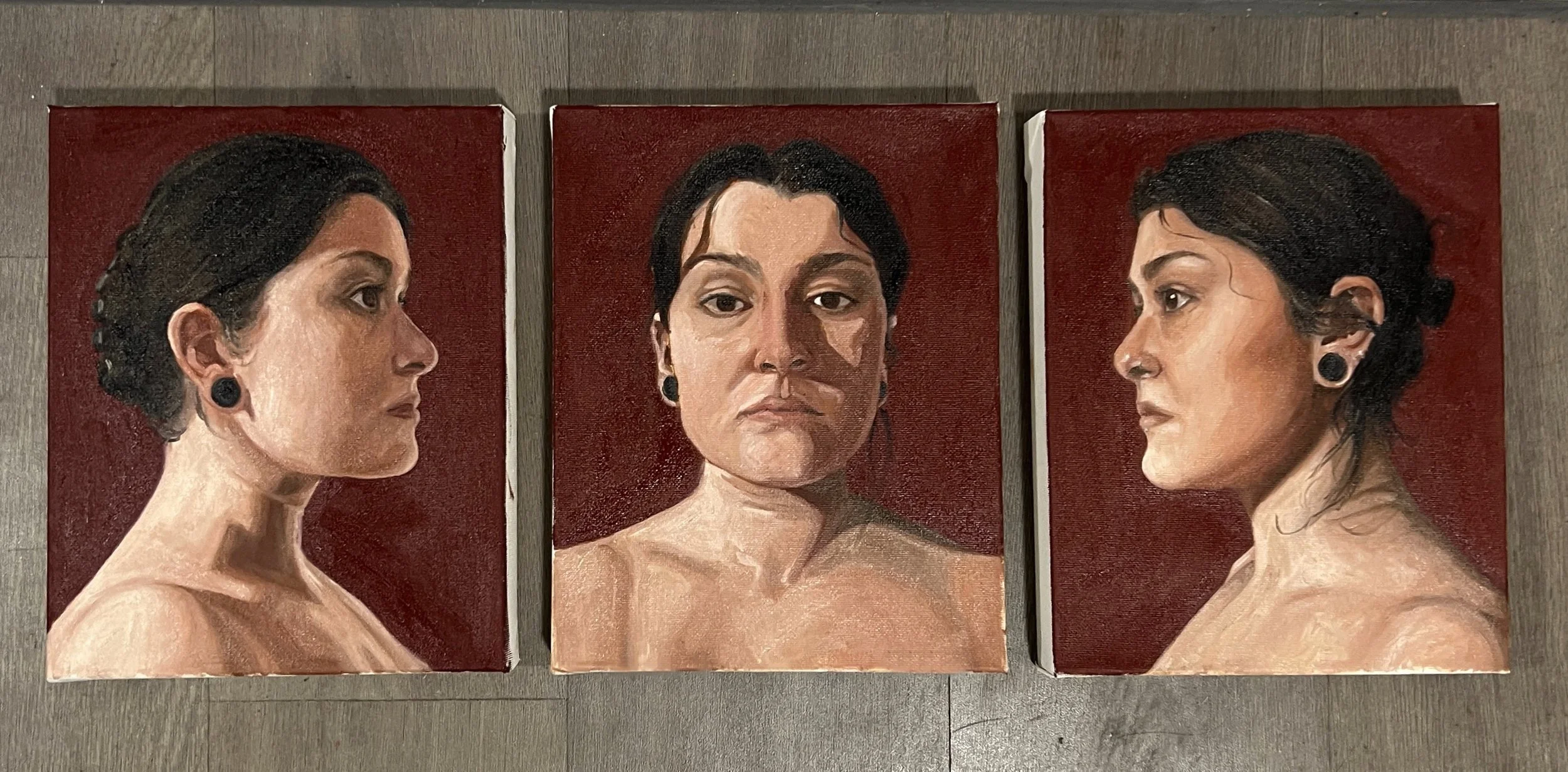The Significance of Self-Portraiture
Self-portraiture, a practice embedded in the annals of art history, has consistently played a practical and multifaceted role in the artistic landscape. Beyond its apparent function as a means of personal documentation, self-portraiture has emerged as a dynamic tool for skill development, contributing significantly to the evolution of artists' capabilities. This article delves into the enduring significance of self-portraiture, delving into the intricate layers that underscore its historical prominence and contemporary relevance.
Rhiannon Piper, Self Portrait, Work in Progress.
From the early self-portraits of renowned masters to the contemporary expressions of selfhood, artists have wielded self-portraiture as more than just a reflection of their physical appearance. It has been a mirror reflecting the evolving styles, techniques, and even the psychological depths of creators. This article seeks to unravel the underlying threads that weave through the fabric of self-portraiture, with a particular emphasis on the challenges inherent in accurately depicting one's own likeness.
The Complexities of Self-Portraiture:
Self-portraiture, extending beyond historical documentation, serves as a valuable tool for artists in their pursuit of skill refinement and self-expression. Its practical significance lies in the iterative process of self-representation, offering artists a unique opportunity to confront and navigate challenges associated with biases and subjective interpretation.
The act of painting oneself presents unique challenges compared to portraying someone else, primarily due to the inherent familiarity an artist has with their own features. When artists depict others, they approach the subject with a certain degree of detachment, allowing for a more objective and impartial observation. In contrast, painting oneself involves a subjective bias, as the artist is intimately acquainted with the nuances of their own face, making it inherently challenging to maintain an unbiased perspective.
The difficulty in self-portraiture arises from the internalized perception an artist holds about their facial features. This familiarity can lead to unintentional exaggeration or idealization, distorting the accuracy of the portrayal. Artists may emphasize or diminish certain aspects of their features based on personal preferences or preconceived notions, impacting the authenticity of the representation. This inherent subjectivity complicates the artist's ability to objectively capture their own likeness on canvas.
Moreover, the act of self-observation during the painting process introduces a level of complexity that is absent when painting external subjects. Artists must simultaneously execute the technical aspects of the painting while navigating their own self-awareness. This dual focus can be demanding, as the artist strives to reconcile their internal perception with the external representation on the canvas. The challenge lies in achieving a balance between a truthful portrayal and the inherent biases that stem from the close familiarity an artist has with their own image.
Overcoming Bias: Developing Observational Skills
The transformative journey initiated by self-portraiture is manifested in the evolution of an artist's perceptual abilities. Through repeated attempts at self-portrayal, artists cultivate heightened awareness of facial features, proportions, and subtle nuances. This heightened sensitivity extends beyond the canvas, influencing how artists observe and interpret the external world. Practical insights into the iterative nature of the process and its impact on refining observational skills are highlighted. By overcoming biases in self-representation, artists not only improve their technical proficiency but also establish a more objective connection with their subject matter.
Painting oneself is tougher than portraying external subjects due to personal biases. Familiarity with one's own features introduces subjectivity, affecting the needed objectivity for accurate representation. Overcoming biases requires continuous self-observation to heighten awareness of facial features, proportions, and nuances. However, artists often struggle with the tendency to exaggerate or idealize aspects based on personal perceptions.
The transformative journey of self-portraiture unfolds through repeated attempts to capture one's likeness. This process provides practical insights into refining observational skills. The challenge lies not just in technical aspects but also in the needed psychological shift. Achieving objectivity in self-portraits demands time, as seen in the user's context of a six-month effort. The gradual detachment from preconceived self-perceptions allows artists to see themselves objectively, enabling them to paint what they see rather than selectively.
Despite the initial difficulty, this newfound objectivity extends beyond self-portraits, influencing the artist's overall painting approach and material use. Detaching from personal biases not only enhances self-portraits but also establishes a more objective connection with subject matter. This shift, rooted in overcoming biases, results in a more nuanced and genuine representation that resonates across the artist's creative endeavors.
Rhiannon Piper, Self Portrait, Work in Progress.
In conclusion, this article underscores the practical insights gained from a focused examination of self-portraiture. The transformative journey experienced by artists, free from embellishments, leaves a lasting impact on their self-perception and observational capacities. By navigating biases and developing observational skills, self-portraiture emerges as a pragmatic and valuable tool in both artistic and cognitive domains, contributing tangibly to skill development and the establishment of a practical connection between the artist and their subject.


